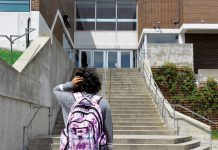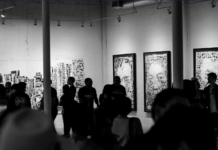With the onset of increased remote learning and working from home, the notion of protests and rallies has shifted from the streets to the screens.
With students at home bingeing their favourite TV shows and spending most of their time online for school, work, and entertainment, they are a key demographic with a newfound ability to dial in and pay attention to important issues like never before. However, whether students are truly engaged in social movements remains to be seen.
The United Nations has defined slacktivism as when people “support a cause by performing simple measures” but “are not truly engaged or devoted to making a change”. This type of activism is on the rise. In light of the year that was 2020, people have been bombarded with social movements and political disputes on top of the COVID-19 pandemic. With more people staying at home, it was simply easier, safer, and more convenient to participate in civic life via the screens.
Social media is often thought of as the new ground for political and social activism. However, creating real lasting change is not as easy as a simple share or a casual retweet.
Today, 72 per cent of young adults, surveyed in a United States database, use some type of social media. Being aware that 45 per cent of people aged 18 – 24 use their smartphones as their main news source, one 2019 study found, the way we engage with politics and social activism has progressively changed. It takes two seconds to read a news headline but weeks to plan a strong protest and months or years to create new policy.
We’ve seen posts of black squares during #BlackoutTuesday in response to the killings of George Floyd, Ahmaud Arbery, and Breonna Taylor as well as in support of the Black Lives Matter Social Movement, yet police brutality and racial discrimination remain strong issues even now, more than entire year later.
We’ve found hundreds of children’s bodies buried at several different residential schools across Canada, from Marieval Indian school in Saskatchewan to Kamloops Indian Residential School in British Columbia as cold reminders of the atrocities committed by Canadians in the past. And yet, little has been done in service of the first nations families that continue to suffer from the intergenerational trauma of cultural homicide in residential schools and racial discrimination in the creation of laws and policies.
Despite being only five per cent of the total population, indigenous peoples represent over 30 per cent of incarcerated individuals in Canada. Moreover, more than 50 indigenous reserves are still under a boil water advisory where strategies for reform and new funding have not been updated in 30 years.
Whether you add it to your story, like a post, or share a colourful image or statistic — adding to your social media is enough for you to tell yourself that you’re raising awareness and that you’re making a difference in people’s lives even when you’re really not. Which brings to question how many students are actually doing their homework on issues they outwardly support. Readers who get their news from social media are less knowledgeable on the subject than their traditional news counterparts, one study finds. Slacktivism’s shared posts on social media are superficial and don’t tell the whole story.
It’s all too easy to simply share a post and care about something for one day, one week, or even for a special month. Which makes it all the more obvious that the changes made are only superficial. Meaningful work cannot happen without effort, and those who believe otherwise are disillusioned by slacktivism’s easy appearance.
Raising awareness on social media is the first step in creating meaningful social change but unless those trendy sentiments can translate into long lasting political will, they won’t mean anything at all.































